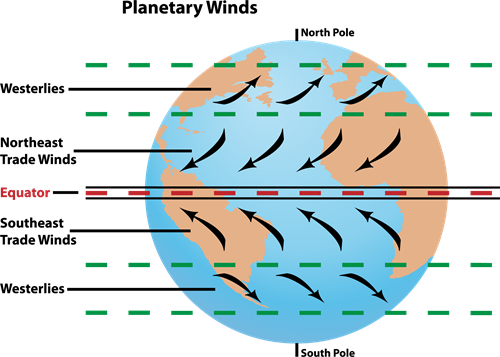
PUMPA - SMART LEARNING
எங்கள் ஆசிரியர்களுடன் 1-ஆன்-1 ஆலோசனை நேரத்தைப் பெறுங்கள். டாப்பர் ஆவதற்கு நாங்கள் பயிற்சி அளிப்போம்
Book Free DemoThe Planetary winds are also known as permanent winds or prevailing winds as they continuously blow in a particular direction throughout the year. Pressure belts control them. The planetary wind is of three types: the trade wind, the Westerlies and the Polar Easterlies.

Trade Winds
Westerlies
In the southern hemisphere, i.e. from the 40°S\ to\ 60°S, Westerlies blow with much greater force throughout the year. These are called Roaring Forties at 40°, Furious Fifties at 50° and Screaming Sixties at 60° latitudes.
Polar Easterlies
Coriolis effect is defined as the deflection of winds from their original path due to the rotation of the Earth. Winds are deflected to the right in the northern hemisphere and to the left in the southern hemisphere, which is known as “Ferrel's law”. This was profounded by William Ferrel. He used “Coriolis force” named after G.G Coriolis (1792-1843) for proving Ferrel’s Law